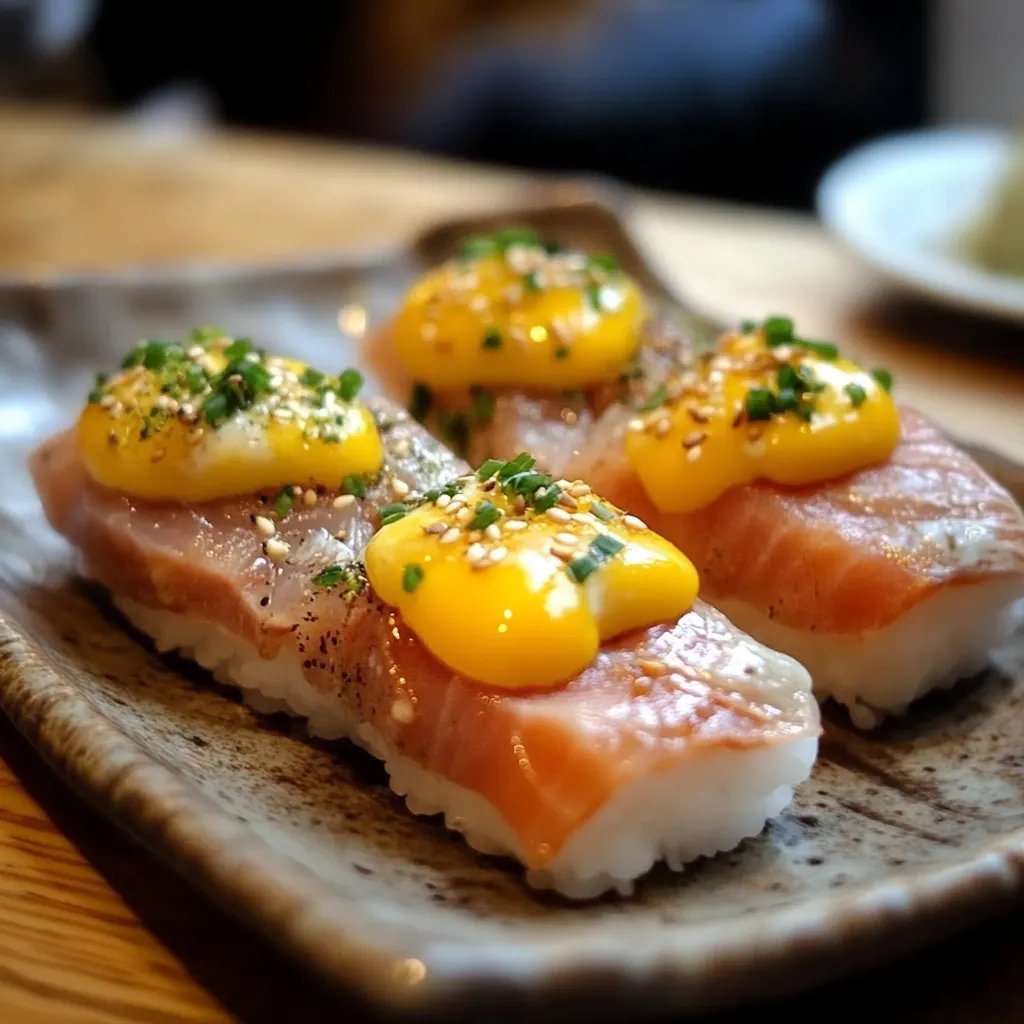Nikkei: Japanese-Peruvian Fusion Cuisine – An Amazing Ultimate Guide

Nikkei: Japanese-Peruvian Fusion Cuisine is an incredible culinary experience that beautifully marries the flavors of Japan with the vibrant zest of Peru. This remarkable fusion showcases the rich history and cultural exchange between the two countries. By combining traditional Japanese techniques with Peruvian ingredients, Nikkei cuisine creates beautiful and innovative dishes that offer an explosion of flavors in every bite. Whether you're a food enthusiast or simply curious about different culinary traditions, exploring the world of Nikkei can be a delightful journey.
The origins of Nikkei cuisine date back to the Japanese immigrants who arrived in Peru in the early 20th century. They brought along their culinary traditions and ingredients, adapting them to the local produce while maintaining their heritage. The result? A creative fusion that brilliantly represents both cultures. Today, Nikkei is celebrated not just in Peru but around the world, as food lovers recognize its unique taste and aesthetic appeal.
Through this guide, you will uncover the reasons why exploring the flavors of Nikkei cuisine is so worthwhile, as we provide essential information about preparation time, ingredients, and step-by-step instructions to create your own dishes. Whether you're new to cooking or a seasoned chef, this guide offers you a chance to immerse yourself in the fascinating world of Nikkei.
Why You’ll Love This Cuisine
The allure of Nikkei: Japanese-Peruvian Fusion Cuisine is undeniable. Here are several compelling reasons to fall in love with this unique cooking style:
- Distinct Flavor Combinations: Combining the umami of Japanese cuisine with the bold flavors of Peruvian dishes creates a remarkable taste. Ingredients such as miso, soy sauce, and fresh seafood pair beautifully with Peruvian staples like aji amarillo and rocoto peppers.
- Cultural Harmony: Each dish represents a merger of two rich culinary traditions, showcasing how food can bridge cultural divides. This deep-rooted history makes Nikkei meals not just about taste but also about stories.
- Vibrant Ingredients: The focus on freshness in both cuisines brings forth a colorful array of ingredients, including sashimi, ceviche, and the famed Peruvian corn. It makes every dish an eye-catching delight.
- Creative Presentation: Nikkei cuisine celebrates artistry in plating. The aesthetic appeal of each dish is often just as enticing as the flavors, providing a feast for both the senses.
- Flexibility and Versatility: Nikkei not only accommodates various dietary preferences but also encourages creativity. You can easily adapt recipes to suit your tastes or ingredient availability.
- Health Benefits: The use of fresh ingredients like fish, vegetables, and herbs makes Nikkei cuisine a nourishing choice. The high omega-3 fatty acids from fish and the nutrients from fresh produce contribute to a healthy diet.
With these unique aspects, it’s clear why Nikkei cuisine is gaining popularity worldwide. Each bite brings a burst of flavor that’s rooted in tradition and innovation.
Preparation and Cooking Time
Engaging with Nikkei cuisine can be a rewarding culinary adventure. The time required to prepare these dishes varies based on numerous factors, including recipe complexity and cooking skills. Here’s a typical framework:
- Preparation Time: 30 to 60 minutes
- Cooking Time: 20 to 40 minutes
- Total Time: 1 to 1.5 hours
These durations depend on the specific dishes you're preparing, the efficiency of your kitchen practices, and whether you're experimenting with new techniques.
Ingredients
Here’s a list of common ingredients used in Nikkei cuisine that you might want to keep handy:
- Seafood: Salmon, tuna, or white fish (like tilapia)
- Ceviche Ingredients: Lime juice, aji amarillo, cilantro
- Vegetables: Avocado, corn, sweet potatoes
- Japanese Staples: Soy sauce, sake, mirin
- Herbs & Spices: Ginger, garlic, sesame seeds
- Fruit: Mango, Peruvian olives, and pomegranate
- Condiments: Miso, ponzu sauce, and wasabi mayo
While the specific ingredients can vary with each recipe, this list covers the essentials that allow you to experiment with a variety of dishes.
Step-by-Step Instructions
Creating your own Nikkei-inspired dish can be straightforward with these easy-to-follow steps. Here’s how you might prepare a simple yet authentic Nikkei ceviche:
- Select Your Fish: Choose a fresh white fish or seafood. Ensure it is sushi-grade for the best taste.
- Prepare the Marinade: In a bowl, mix lime juice, soy sauce, aji amarillo, and a touch of sesame oil. This unique blend will enhance the fish's natural flavor.
- Cut the Fish: Dice the fish into bite-sized pieces. Ensure uniformity for even marination.
- Marinate the Fish: Place the diced fish into the marinade. Allow it to sit for about 15-20 minutes, or until the fish appears "cooked" by the citrus.
- Mix in Vegetables: Once the fish is marinated, add diced red onion, chopped cilantro, and avocado to the mixture.
- Serve Immediately: Present the ceviche in bowls, garnishing with a sprinkle of sesame seeds and an optional drizzle of spicy mayo.
- Accompaniment: Pair with sweet potato slices or corn for balance.
By following these straightforward steps, you can prepare a delicious Nikkei-style ceviche that highlights the wonderful blend of Japanese and Peruvian flavors.
How to Serve
Serving a Nikkei dish requires attention to detail for a memorable experience. Here are some tips on presenting your culinary creation:
- Plating: Use a wide, shallow bowl for ceviche, allowing the colors and textures to shine. Arrange components artfully, drizzling sauce strategically.
- Garnishes: Fresh herbs or radish slices add visual appeal and enhance flavor. Edible flowers are a lovely touch if available.
- Side Dishes: Consider offering sides like yuca fries or a refreshing salad featuring ginger vinaigrette to complement the meal.
- Beverage Pairing: Provide drinks like pisco sour, a Japanese whiskey, or even chilled sake to enhance the tasting experience.
- Atmosphere: Create an inviting setting with soft lighting and calming music, enhancing the enjoyment of the meal.
By incorporating these serving tips, you can transform a simple meal into a delightful dining experience that showcases the beauty of Nikkei cuisine.
Additional Tips
- Experiment with Ingredients: Don’t hesitate to try out different varieties of seafood or vegetables. Each addition can create a new flavor profile in your Nikkei dish.
- Balance Flavors: A key aspect of Nikkei cuisine is balancing the umami from the Japanese elements with the bright, spicy flavors from Peru. Tasting as you go can help you achieve this harmony.
- Freshness is Key: Always use the freshest ingredients available. This is especially true for seafood, as quality directly impacts the final dish.
Recipe Variation
Nikkei cuisine is versatile, and you can easily play around with recipes. Here are some enjoyable variations:
- Tropical Twist: Incorporate fruits like mango or papaya into your ceviche for an added sweetness that complements the dish.
- Vegetarian Alternative: Replace fish with mushrooms or tofu, marinated in the same mixture. This gives a delicious and hearty alternative for vegetarians.
- Different Marinades: Explore using yuzu juice instead of traditional lime juice for a unique citrus flavor that brings freshness to your dish.
Freezing and Storage
Understanding how to store your Nikkei dishes properly can enhance your cooking experience:
- Storage: Fresh ceviche is best enjoyed immediately. However, if you need to store leftovers, keep them in the refrigerator in an airtight container for up to 24 hours.
- Freezing: While freezing isn’t recommended for ceviche due to the raw fish, cooked Nikkei dishes can be frozen. Ensure they are well-wrapped to prevent freezer burn and consume within three months.
Special Equipment
To ensure the successful preparation of Nikkei cuisine, consider gathering the following kitchen tools:
- Sharp Knives: Essential for precise cutting of seafood and vegetables, maintaining presentation and flavor.
- Mixing Bowls: Use glass or ceramic bowls for marinating ingredients.
- Vegetable Peeler: Helpful for preparing fresh produce like sweet potatoes or cucumbers.
- Fish Scaler: If you’re using whole fish, this tool will make the preparation easier.
- Temperature Probe: Handy for ensuring fish is sushi-grade, providing safety and assurance with your dishes.
Frequently Asked Questions
What types of fish are best for Nikkei ceviche?
Sushi-grade fish options such as salmon, tuna, or tilapia work incredibly well for Nikkei-style ceviche.
Can I use frozen fish?
It's best to use fresh fish for ceviche, but if using frozen, ensure it is fully thawed and sushi-grade to maintain flavor and safety.
Is Nikkei cuisine spicy?
The spiciness can vary. Ingredients like aji amarillo can add heat, but you can adjust the quantity to suit your preference for spiciness.
How long should ceviche marinate?
Typically, ceviche should marinate for 15-20 minutes or until the fish appears opaque. However, marinating for too long may cause the fish to become mushy.
Conclusion
Nikkei: Japanese-Peruvian Fusion Cuisine offers a vibrant culinary adventure that unites the best of both worlds. This unique approach celebrates the flavors, traditions, and techniques from Japan and Peru. With an array of ingredients, the possibilities are endless. By mastering Nikkei cuisine, you embark on an exciting cooking journey full of delightful surprises. Whether you're hosting a dinner party or enjoying a meal with family, Nikkei cuisine ensures a flavorful experience that will leave your taste buds wanting more.
